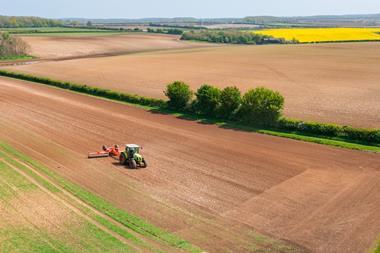
When you think of sustainability, what comes to mind? Green initiatives, nice PR, or dare I say it, a cost line? How about supply chain security, business continuity, or risk management?
We all know the case for taking action on the climate and nature crisis. Carbon emissions need to peak as soon as possible to limit the climate shocks that are disrupting our supply chains more severely each year. There are a hundred harvests left in our degraded soil. And the natural resources necessary for food production are drying up, from rivers to biodiversity.
The food industry is driving this decline. Agriculture is the leading cause of nature’s devastation, and if we continue to emit the current rate of emissions from food, we will overshoot every reasonable climate target. But, as The Grocer’s latest investigation suggests, the industry is not currently set up to let sustainability teams do the job they’ve been tasked with.
So much with so little
There is no other function expected to do so much with so little resource. Sustainability teams are expected to write a strategy, get the business on board, and then deliver on these aims. Moreover, they side of the business’s own, which are often at odds with sustainable targets.
Because externalities of products are not priced in, sustainability teams spend their time justifying activity through endless data, while grappling with the fact their colleagues might be pushing promotions and sales which undermine the supply chain work they are doing.
Sustainability managers know how to position the organisation externally to score well in NGO scorecards, but it doesn’t mean delivery is happening. EY’s Enough report explains: “It is one of the open secrets of corporate sustainability that the easiest way to climb the majority of benchmarks and indices is to disclose more, rather than do more.”
This is driven not just by senior leaders who want to see slick PowerPoints, but by the consultancies which have sprung up around sustainability making huge sums on reporting.
External vs internal action
Government regulation can help – for example, by levelling the playing field on deforestation regulation, as retailers have requested. Voluntary initiatives, such as the work done by Wrap and IGD, can also support change. Similarly, a more relaxed competition framework could support change, as Fairtrade and WWF have tested with the CMA.
But those I speak to in the industry are clear this cannot substitute for internal action – the responsibility for delivery remains with businesses, not the conveners and advisers.
Read more:
-
WWF: UK supermarkets ‘off track’ to meet critical environmental targets
-
How sustainability efforts in food are going up in flames
-
Can Plastics Pact II do any better without legislation?
Honestly mapping your sustainability commitments onto your commercial plans and business strategy is an imperative in understanding whether you are on track – and getting strategy and commercial teams to lead this process with your sustainability experts is essential.
This might feel uncomfortable, but businesses are flexible and innovative. When commercial teams have incentives and KPIs linked to sustainability, they will find smart ways to move the market.
Strategy is a holistic endeavour with an expansive time horizon and far-reaching consequences. It’s time to reframe this discussion away from surface-level optics and costs, and into managing supply chain externalities and the security of supply. Stop seeing sustainability teams as PR teams or a cost centre – they are supporting business resilience and should be treated as gatekeepers on key business decisions.
If category plans and contracts were only signed off once they backed the sustainability targets, we would have a strategic direction that delivers transformation. This is a plea to empower every member of the sector to deliver a real transformation, collaboratively.



















No comments yet